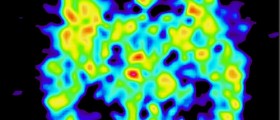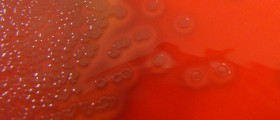
The lumbar puncture procedure is used to collect samples of cerebrospinal fluid. This fluid surrounds the brain and the spinal cord. When it is taken for sampling, the fluid is tested in order to diagnose conditions such as bacterial meningitis. In some cases, medications are injected using this procedure. Side effects are usually not severe if the procedure is undertaken with proper care. Lumbar puncture is also known as a spinal tap.
Procedure
The procedure is normally performed if the patient is suspected of having developed meningitis. Lumbar puncture is the most reliable way to diagnose this condition. The procedure might also be undertaken if conditions such as subarachnoid hemorrhage, hydrocephalus, tumor, multiple sclerosis and other neurological diseases are suspected. Diagnosis will normally involve checking the pressure of the cerebrospinal fluid.
Patient's Position During the Procedure
Prior to any insertion of needles, the patient will be asked to lie on their side. Knees should be bent towards the chest. In some rare cases, the procedure can be carried out with the patient sitting on a chair or stool. Anesthesia will be applied to the area into which the needle will be inserted. The needle will normally be inserted between the 3rd and 4th vertebrae and pushed in far enough to penetrate the spinal canal.Side effects
For the most part, this is a safe and reliable procedure. Side effects are rare. However, the most common side effect that occurs as a result of the procedure is headache. This might last as long as two or three days. Analgesics and pain killers can help to relieve the symptoms of the headache. If the headache lasts longer than this period of time, it might be possible that a leakage of cerebrospinal fluid has occurred.
Headaches and Back Pain
Headaches of this kind are normally experienced at the front of the head or at the base of the skull. Around forty per cent of lumbar puncture patients will experience this side effect. Back pain is another common side effect of the procedure, but in general this is not considered to be a serious problem.
Nerve and Spinal Cord Injury
In rare cases, some might experience minor nerve injury as a result of the procedure. On the more severe side of things, some who undergo the procedure might experience spinal or epidural bleeding. Other side effects of the procedure include spinal cord injury, paraplegia or lower body paralysis. Rarely, some will experience loss of sensation, tonsillar herniation, cranial neuropathies, spinal hematoma, vasovagal syncope, subarachnoid cysts and seizures.


_f_280x120.jpg)














Your thoughts on this
Loading...